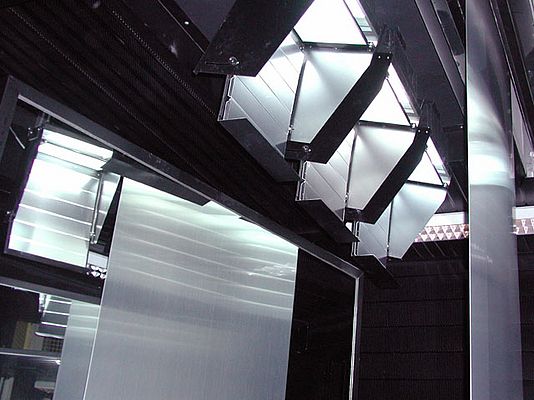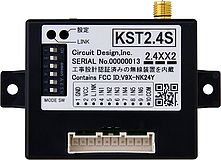LDV-Systeme has been commissioned by Converteam GmbH with the supply of several iLux light systems. The systems will be used at the galvanizing and continuous annealing lines built as part of the “Compass” project of ThyssenKrupp Steel. They will inspect the strip for surface defects that cannot be classified by automatic inspection systems.
TKS will use the lighting systems for visual surface inspection at four lines of its new rolling mill in Alabama. At each line LDV will install two lighting systems for inspecting horizontally and one for the inspection of vertically running strip. The installed mirrors will enable the inspector to observe both strip sides at the same time.
The decision in favor of iLux was due to the fact that TKS had been using the previous generation of the systems at several galvanizing lines in Germany for many years. The systems have proved highly efficient and have become an integrated element of quality assurance in strip production.
iLux Lichtsegel (“light sails”) reflect directional, quasi-parallel light onto the strip surface, making defects clearly visible. They illuminate the strip surface homogeneously and at an intensity level perfectly adapted to the human eye. This makes visible also small and faint defects and those spreading over a large area, for example, impressions left by skin-pass rolls or streaks, which cannot be detected by automatic systems.
At the lines in Alabama, also automatic surface inspection systems will be installed. Whenever these systems signal non-classifiable defects or defects which they have not been trained for, the line crew will be flagged a message upon which they will examine the strip segments in question at the iLux station.
Another purpose of the visual inspection procedure will be to train the automatic systems. The light reflected by the light sails is particularly well suited to train and check automatic inspection systems, as these also use quasi-parallel light to illuminate the strip surface. That is, the human eye and the cameras see the strip surface under similar conditions.
For Heinz Hahne, Managing Director of LDV-Systeme, visual checks and automatic surface inspection systems are ideal complements. “In spite of all progress in the development of hardware and algorithms, it will always be the human operator to make the ultimate ship or block decision. Visual inspection remains an indispensible tool for initial training of automatic systems, for continuous detection rate monitoring and identifying defects that are invisible to automatic systems.”

















